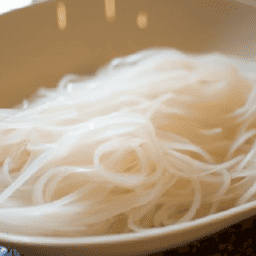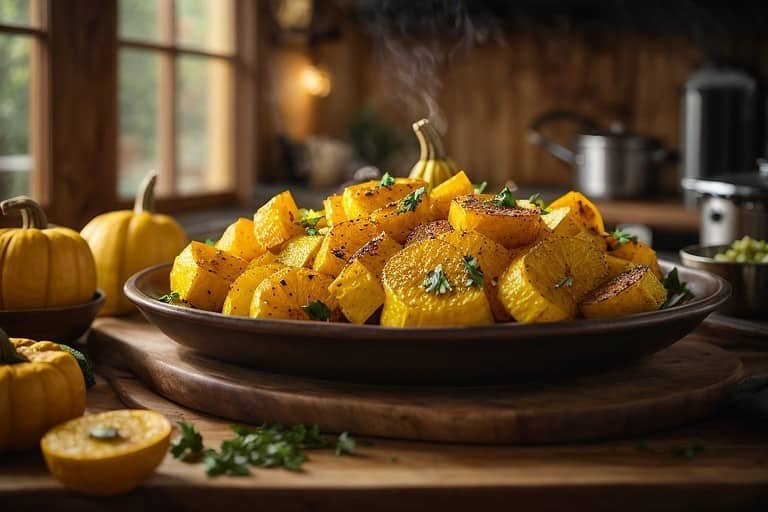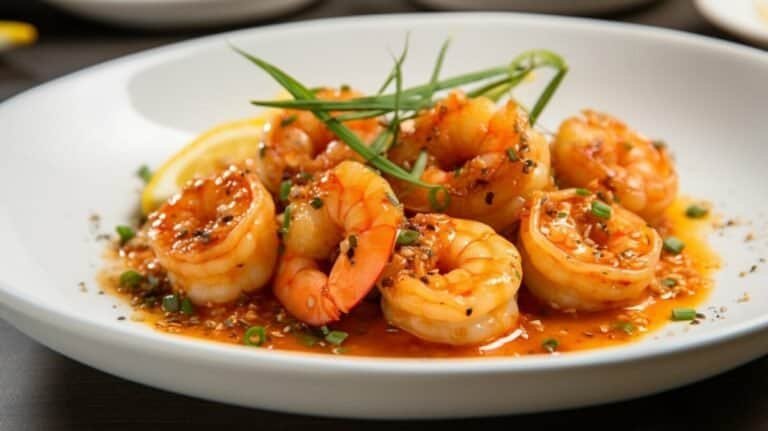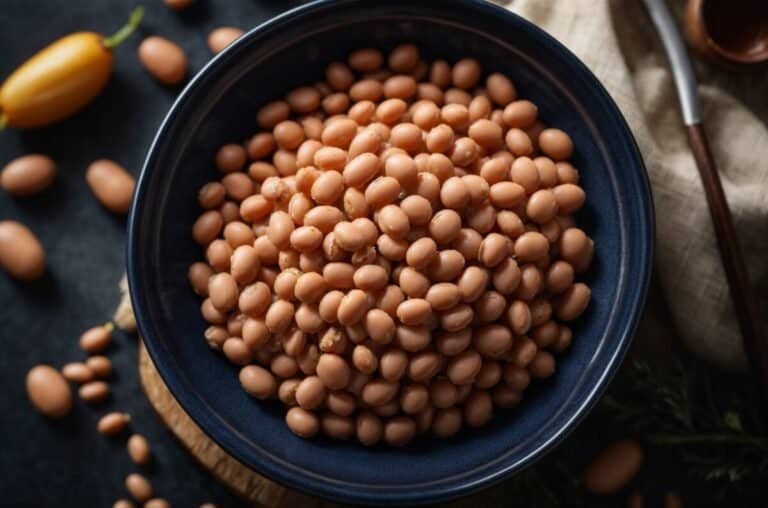How To Cook Rice Noodles
If you’re a fan of Asian cuisine or simply looking to explore new flavors, knowing how to cook rice noodles is a valuable skill to have. With their delicate texture and ability to absorb delicious flavors, rice noodles can elevate your dishes to a whole new level. Whether you’re planning to whip up a stir-fry, prepare a comforting bowl of soup, or create a refreshing noodle salad, this article will guide you through the essential steps to perfectly cook rice noodles every time. From tips on selecting the right type of noodles to mastering the cooking process, get ready to embark on a culinary adventure that will leave your taste buds wanting more.
Understanding Rice Noodles
Rice noodles are a popular staple in many Asian cuisines, known for their soft and delicate texture. Made from rice flour or rice starch, they come in various shapes and sizes, ranging from thin vermicelli to wider flat noodles. These noodles are gluten-free and are often used as a substitute for wheat-based noodles, making them suitable for those with gluten sensitivities or dietary restrictions.
Types of Rice Noodles
There are several types of rice noodles available, each varying in thickness and width. Vermicelli, also known as rice sticks, are thin and delicate noodles that can be used in soups, stir-fries, or spring rolls. Flat rice noodles, also called Pad Thai noodles, are wider and more substantial, perfect for stir-frying. Rice noodles are also available in round shapes, like rice cakes used in Korean dishes such as tteokbokki.
Nutritional Value of Rice Noodles
Rice noodles are a healthy alternative to wheat-based noodles as they are naturally gluten-free. They are low in calories and fat, making them suitable for those watching their weight. Rice noodles also provide a good source of carbohydrates, which are essential for energy production. They are also a good option for individuals with dietary restrictions, such as vegans or vegetarians, as they are free from animal products. However, it’s important to note that rice noodles are not a significant source of protein or other essential nutrients, so it’s essential to pair them with protein-rich ingredients for a balanced meal.
Popular Dishes With Rice Noodles
Rice noodles are incredibly versatile and can be used in a variety of dishes from different cuisines. One of the most well-known dishes made with rice noodles is Pad Thai, a flavorful stir-fry dish that combines rice noodles with eggs, shrimp, tofu, and a tangy sauce. Another popular dish is Pho, a Vietnamese soup that features rice noodles in a flavorful broth with various meats and vegetables. Additionally, rice noodles are often used in various Asian stir-fries, salads, and spring rolls, allowing for endless culinary creativity.
Ingredients Needed
To cook delicious rice noodles, you’ll need a few essential ingredients that will enhance their flavor and texture.
Selecting Quality Rice Noodles
When choosing rice noodles, opt for brands that use high-quality rice flour or rice starch. Look for noodles that are translucent, indicating their freshness. Avoid noodles that appear dry or brittle, as they may not cook well and may have a compromised texture.
Must-Have Spices for Rice Noodles
To add depth and flavor to your rice noodle dishes, it’s essential to have a few key spices on hand. Soy sauce, fish sauce, sriracha, chili flakes, garlic, ginger, and sesame oil are common spices used in many rice noodle recipes. These spices will help create a delicious balance of savory, spicy, and tangy flavors.
Common Accompaniments for Rice Noodles
To complete your rice noodle dish, consider including various accompaniments that will enhance the overall flavor and add texture. Bean sprouts, chopped cilantro, lime wedges, crushed peanuts, and sliced scallions are popular toppings that can bring freshness and a delightful crunch to your meal. Additionally, you can add proteins like chicken, beef, shrimp, or tofu to make your rice noodles more filling and satisfying.
Preparation before Cooking
Proper preparation before cooking is a crucial step to ensure that your rice noodles turn out perfectly cooked and delicious.
Deciding the Quantity of Rice Noodles
The quantity of rice noodles required depends on the number of servings and personal preference. As a general guideline, aim for about 2 ounces (55 grams) of dry rice noodles per person. However, feel free to adjust the quantity based on your desired portion size.
Soaking Rice Noodles: Why and How
Soaking rice noodles is an essential step to ensure that they cook evenly and have the right texture. The noodles need to be softened before cooking, as they are dry and brittle in their original form. To soak rice noodles, place them in a large bowl and cover them with hot water. Let them sit for approximately 10-15 minutes, or until they become pliable and slightly transparent. Ensure that you do not over-soak the noodles, as they will become mushy and lose their delicate texture.
Draining and Drying the Noodles
Once the rice noodles have soaked and softened, it’s important to drain them properly before cooking. Use a colander or sieve to remove excess water from the noodles, gently shaking them to ensure all the water is drained. After draining, leave the noodles exposed to air for a few minutes to dry slightly. This will prevent the noodles from becoming clumpy when cooked and will help them absorb the flavors of your chosen dish more effectively.
How to Boil Rice Noodles
Boiling rice noodles is a straightforward process that requires precise timing and temperature control to achieve the perfect consistency.
Setting the Right Temperature
To boil rice noodles, fill a large pot with water and bring it to a rolling boil over high heat. It’s crucial to ensure that there is enough water to fully submerge the noodles without overcrowding the pot. Maintaining a steady, high heat will allow the noodles to cook quickly and evenly.
Boiling Time for Different Types of Rice Noodles
The boiling time for rice noodles may vary based on their thickness and width. Thin vermicelli noodles usually require about 3-5 minutes of boiling to achieve an al dente consistency. For wider flat noodles, the cooking time may be slightly longer, typically ranging from 6-8 minutes. It’s important to check the package instructions or taste the noodles periodically to ensure they are cooked to your desired doneness.
Checking for Perfectly Boiled Rice Noodles
To check if the rice noodles are perfectly boiled, remove a strand from the pot and rinse it under cold water. Take a bite and check the texture. The noodles should be tender, yet slightly chewy, known as being al dente. If the noodles are still too firm, return them to the boiling water for an additional minute or two. Avoid overcooking the noodles, as they will become mushy and lose their delicate texture.
How to Stir-fry Rice Noodles
Stir-frying rice noodles is a quick and flavorful cooking method that allows the noodles to absorb the delicious aromas and spices.
Preparing the Pan for Stir-frying
To stir-fry rice noodles successfully, start by heating a wok or a large skillet over high heat. Add a small amount of oil, such as vegetable or sesame oil, and swirl it around to coat the bottom of the pan. The hot wok or skillet will help create that signature smoky flavor and prevent the noodles from sticking.
Ideal Temperature and Time for Stir-frying
Once the pan is hot, add the pre-soaked and drained rice noodles to the pan. Use tongs or a spatula to stir and toss the noodles continuously to prevent them from clumping or sticking to the pan. Stir-fry the noodles for approximately 3-5 minutes or until they are heated through and have absorbed the flavors of the spices and ingredients added.
Adding Spices While Stir-frying
To make your stir-fried rice noodles truly special, add a variety of spices, sauces, and vegetables. Start by adding minced garlic and ginger to the pan and stir-fry for a minute until fragrant. Then, incorporate your desired vegetables, such as bell peppers, broccoli, bean sprouts, or carrots, and stir-fry until they are crisp-tender. Finally, add your preferred sauces, such as soy sauce, fish sauce, or oyster sauce, and toss them with the noodles and vegetables until well combined.
How to Make Soupy Rice Noodles
Making soupy rice noodles involves creating a flavorful broth and adding various ingredients for a satisfying and comforting meal.
Choosing the Right Broth for Rice Noodles
The broth is the foundation of any soupy rice noodle dish. Depending on your preferred taste and cuisine, you can choose from different types of broths. For example, Vietnamese pho traditionally uses a beef-based broth, while Thai-style soupy rice noodles might feature a fragrant broth made with lemongrass and coconut milk. Whatever broth you choose, make sure it complements the flavors of the rice noodles and ingredients.
Adding Vegetables and Meat
To make your soupy rice noodles more nutritious and delightful, consider adding an array of vegetables and meat. Leafy greens like bok choy or spinach, sliced mushrooms, bean sprouts, and thinly sliced proteins such as chicken, beef, or shrimp can all be included. Ensure that the vegetables are added at the right time during the cooking process to retain their freshness and crunch.
Setting the Right Cooking Time for Soupy Rice Noodles
The cooking time for soupy rice noodles may vary based on the thickness and width of the noodles and the desired doneness of the ingredients. Generally, rice noodles require a shorter cooking time in soups compared to boiling or stir-frying. Aim to cook the noodles for approximately 2-4 minutes, or until they have softened, yet still retain a light chewiness. It’s crucial to avoid overcooking the noodles, as they can become mushy and lose their texture.
Common Mistakes to Avoid While Cooking Rice Noodles
To ensure your rice noodle dishes turn out perfectly every time, it’s important to avoid some common pitfalls that can affect their texture and taste.
Avoid Over-soaking Rice Noodles
Over-soaking rice noodles can lead to a mushy and overly soft texture, resulting in a less enjoyable eating experience. Follow the recommended soaking time on the package instructions, but feel free to adjust it based on personal preference. The noodles should be pliable and slightly transparent after soaking, not mushy or falling apart.
Prevent Clumping of Rice Noodles
Clumping is a common issue when cooking rice noodles, particularly during stir-frying. To prevent clumping, ensure that the noodles are properly drained and slightly dried before adding them to the pan. Additionally, toss and stir the noodles continuously while cooking to separate them and prevent sticking. A well-heated pan and the right amount of oil will also help prevent clumping.
Stop Overcooking Rice Noodles
Overcooking rice noodles can result in a mushy and limp texture, making them less appetizing. Keep a close eye on the noodles during boiling or cooking to ensure they are cooked to the desired doneness. Taste-test them regularly to determine if they are tender yet slightly chewy (al dente), and promptly remove them from the heat if they are ready.
How to Store Leftover or Uncooked Rice Noodles
If you have leftovers or uncooked rice noodles, you can easily store them to enjoy later or avoid waste.
Storing Uncooked Rice Noodles at Room Temperature
Uncooked rice noodles can be stored at room temperature in a cool and dry pantry for an extended period. To prevent moisture absorption, transfer the noodles to an airtight container or resealable bag. Ensure that the container is tightly sealed to maintain the freshness and quality of the noodles.
Preserving Cooked Rice Noodles in the Refrigerator
If you have cooked rice noodles that you wish to store, refrigeration is the best method to keep them fresh and safe to consume. Allow the cooked noodles to cool down to room temperature before transferring them to an airtight container or a resealable bag. Properly sealed, the cooked rice noodles can be stored in the refrigerator for up to 3-4 days.
Reheating Rice Noodles: Methods and Precautions
To reheat rice noodles, avoid using the microwave, as it can cause the noodles to become overly soft and lose their texture. Instead, bring a pot of water to a boil and add the noodles for a quick dip. Alternatively, you can add the noodles directly to soups or stir-fries and allow them to warm up along with the other ingredients. Remember not to overheat or overcook the noodles during the reheating process, as they can become mushy.
Healthy Rice Noodle Recipes
Rice noodles can be used in a variety of healthy and delicious recipes to suit different dietary preferences. Here are a few recipe ideas to inspire your culinary adventures:
Vegan Rice Noodle Stir-fry
Ingredients:
- 8 ounces of rice noodles
- Assorted vegetables (bell peppers, broccoli, carrots, bean sprouts)
- Tofu or tempeh, cubed
- Soy sauce or tamari
- Sesame oil
- Minced garlic and ginger
- Crushed red pepper flakes
- Chopped scallions and cilantro (for garnish)
Instructions:
- Soak rice noodles according to package instructions.
- In a wok or large skillet, heat sesame oil over high heat. Add garlic, ginger, and crushed red pepper flakes and stir-fry for a minute until fragrant.
- Add the tofu or tempeh and stir-fry until golden brown.
- Add the vegetables and stir-fry until crisp-tender.
- Drain and add the soaked rice noodles to the pan along with soy sauce or tamari. Toss everything together until well combined and heated through.
- Garnish with chopped scallions and cilantro before serving.
Gluten-free Rice Noodle Soup
Ingredients:
- 8 ounces of rice noodles
- Homemade or store-bought broth (vegetable, chicken, or beef)
- Sliced mushrooms
- Bean sprouts
- Leafy greens (bok choy, baby spinach, or kale)
- Thinly sliced cooked chicken or beef (optional)
- Soy sauce or fish sauce (to taste)
- Lime wedges and cilantro (for serving)
Instructions:
- Cook rice noodles according to package instructions, then drain and set aside.
- In a pot, bring the broth to a simmer over medium heat.
- Add the sliced mushrooms, bean sprouts, and leafy greens to the pot and cook until they are tender.
- If using, add the cooked chicken or beef to the soup and heat through.
- Season the soup with soy sauce or fish sauce to taste.
- Divide the cooked rice noodles into bowls and ladle the hot soup over them.
- Serve with lime wedges and cilantro on the side for extra zest and freshness.
Low-Calorie Rice Noodle Salad
Ingredients:
- 8 ounces of rice noodles
- Shredded cabbage
- Julienned carrots
- Thinly sliced cucumbers
- Sliced radishes
- Chopped fresh herbs (cilantro, mint, or basil)
- Crushed peanuts or sesame seeds (for garnish)
- Dressing: lime juice, soy sauce, honey, minced garlic, minced ginger, and chili flakes
Instructions:
- Soak rice noodles according to package instructions, then drain and set aside.
- In a large bowl, combine the shredded cabbage, julienned carrots, sliced cucumbers, sliced radishes, and chopped fresh herbs.
- Whisk together the dressing ingredients in a separate small bowl.
- Add the cooked rice noodles to the vegetable mixture, then pour the dressing over them.
- Toss everything together until well coated.
- Garnish with crushed peanuts or sesame seeds before serving.
Tips and Tricks for Making Perfect Rice Noodles
To elevate your rice noodle dishes and ensure consistently delicious results, consider the following tips and tricks:
Choosing Fresh Ingredients for Better Flavor
Fresh and high-quality ingredients will contribute to the overall flavor and texture of your rice noodle dishes. Opt for crisp and vibrant vegetables, fragrant herbs, and top-quality proteins. Using freshly squeezed citrus juices and homemade broths can also enhance the taste of your rice noodle creations.
Understanding the Balance of Taste
Rice noodles can absorb flavors easily, so it’s important to achieve a well-balanced taste. Experiment with different combinations of spices, sauces, and toppings to find the perfect blend of sweet, salty, sour, and spicy flavors. Adjust the seasonings as needed to suit your personal taste preferences.
Cooking Rice Noodles to the Best Texture
The texture of rice noodles is key to a satisfying dish. Whether you prefer them al dente or softer, always follow the recommended cooking times and taste-test them regularly. Remember that the noodles will continue to cook slightly even after they are removed from heat, so take this into account when determining their doneness.
With these comprehensive guidelines, you are now well-equipped to master the art of cooking rice noodles. Explore various recipes, experiment with different flavors, and have fun creating your own unique rice noodle dishes. Enjoy the versatility and deliciousness that rice noodles bring to your culinary endeavors!







